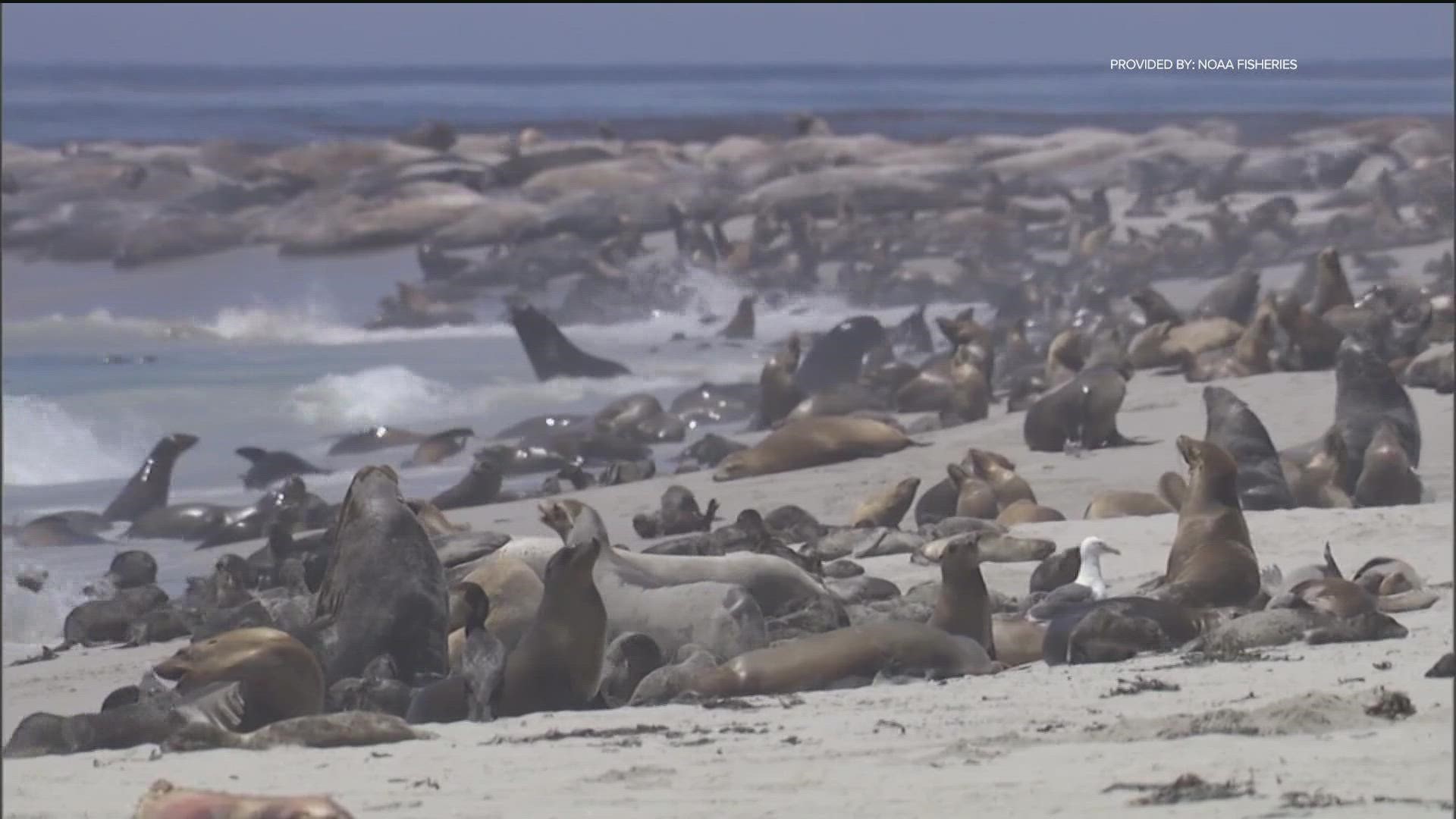SAN DIEGO — We continue to hear reports of sea lions dying along the California coast of cancer. The disease is more common in California sea lions compared to other wildlife species of mammals. In fact, one in four contract this disease that is more often found in the females. To make matters worse, the cancer is spiked by continued traces of a chemical banned in the 70s.
"Well, we think of sea lions as being sentinel species because they occupy the coastal zones of which humans also occupy along the Southern California coast. So as a sentinel species, we're seeing animals coming in with cancer that obviously alarms us that, hey there is something going on," said Dr. Todd Schmitt. He is a Senior Veterinarian at SeaWorld.
What's going on is the increasing numbers in recent years of California sea lions dying from a cancer called urogenital carcinoma. It is a version of genital herpes, and exposure to DDT is causing the high numbers of cancer in these marine mammals.
"It's a co-factor disease. So, it's ultra-synergetic and as it combines, it then forms the cancer in the genital track and causes this carcinoma in the urinary system. It generally effects sexually mature animals because it is a sexual transmitted disease among sea lions," explained Dr. Schmitt.
If you are thinking, wasn't DDT banned decades ago, you would be correct. The insecticide that used to be sprayed on crops and used to control mosquitoes was banned in the United States in the 1970s. A recent survey of the ocean floor near the Channel Islands revealed thousands of barrels of the banned substance. This area is also a common dwelling and birthplace for sea lions.
Dr. Schmitt referred to DDT as a blubber loving compound, which sea lions have plenty of. Unfortunately, the exposure to this chemical leads to accumulation of the toxin in their fatty tissue over their lifetime. Dr. Schmitt also pointed out that this problem is more prevalent in sea lions along the Central and Northern California coast. Most of the sea lions rescued along the Southern California coast are plagued with other health issues.
"We see malnutrition of yearling sea lions. We see trauma from fisheries interaction, gunshot wounds, shark bites, domoic acid toxicity, which is an alpha toxin. So, we see a gamut of different diseases that cause animals in the Southern California bight to strand," stated Dr. Schmitt.
Cancer has not been found in the safely tagged, blubber rich cuties, including "Freeway", who is back at SeaWorld and not strolling along the 94. Additionally, the sea lions at SeaWorld are cancer free because they are not sexually active or exposed to fish contaminated with DDT. Regardless, Californians should be taking note of our ocean's health.
"When animals come in sick with cancer or disease, again that gives us an idea of what is affecting our oceans and what can we be exposed to as well," said Dr. Schmitt.
He continued by emphasizing the long-term consequences of ocean pollution.
"We need to be aware of what we're, runoff, chemicals, the chemicals that we use around the house, what can go down the drain to the ocean can affect wildlife," said Dr. Schmitt.
WATCH RELATED: California Coastal Commission approves closure of sea lion rookery during pupping season

